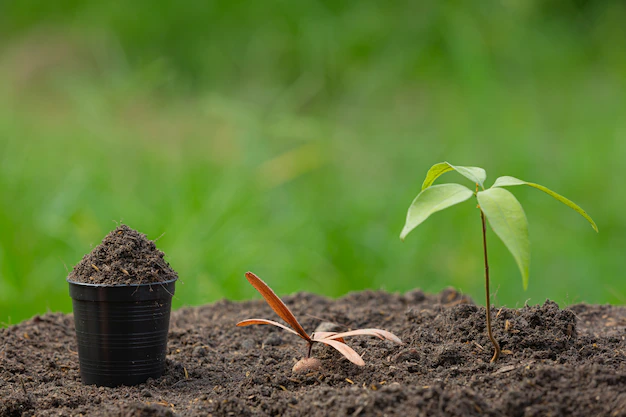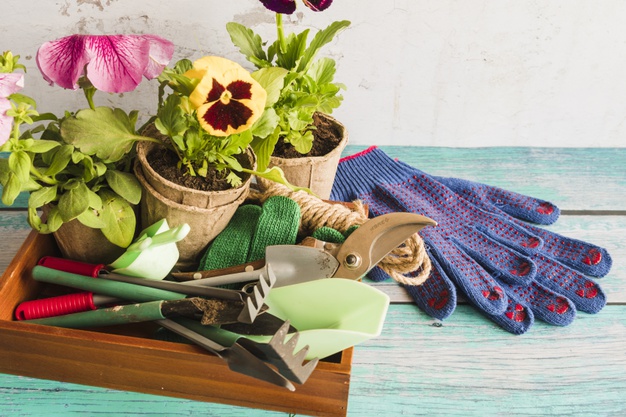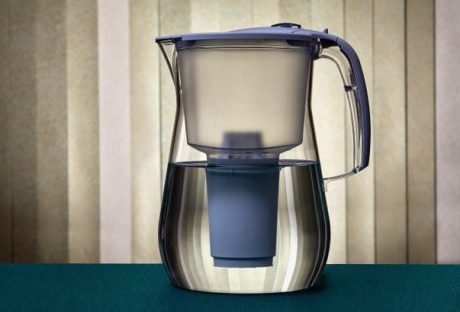With organic fertilizers, you can make the earth stronger and healthier than any other method. They are good for the earth because they don’t hurt it much and let plants grow naturally. This piece has a lot of information about how organic fertilizers can help soil stay healthy.
What Are Organic Fertilizers?
These natural materials from plants or animals help your plants grow better. They’ve got the good stuff like nitrogen, phosphorus, and potassium that plants love. People like them because they’re eco-friendly and don’t harm the environment.
How Do Organic Fertilizers Work?
Organic fertilizers are natural plant nutrients that enrich the soil and provide essential elements for healthy plant growth. They release nutrients slowly, feeding plants over time and improving soil structure. This gradual release helps prevent nutrient runoff and ensures plants receive a balanced diet for optimal development.
One key advantage of organic fertilizers is their eco-friendly nature. Since they’re made from organic matter, they promote soil health by fostering beneficial microorganisms and earthworms. These tiny soil allies aid in nutrient absorption, making it easier for plants to access the necessary nourishment.
Organic fertilizers also contribute to long-term soil fertility, reducing the need for frequent applications and potentially harmful chemicals.
Organic Fertilizers Vs. Chemical Fertilizers
They have a friendly, Earth-loving vibe. In contrast, chemical fertilizers are made in a lab, which sounds more scientific. In terms of effectiveness, both types can make your plants happy, but they differ in how they do it.
Organic fertilizers release nutrients slowly and improve soil structure over time, like a gradual health boost. Chemical fertilizers, on the other hand, provide a quick nutrient fix, like giving your plants a shot of an energy drink.
Now, let’s talk eco-friendliness. Organic fertilizers are environmentally kind, enriching the soil and reducing the risk of chemical runoff into waterways. Chemical fertilizers can sometimes be harsh on the environment, as they may lead to pollution if not used carefully.
Organic fertilizers are the “green” choice, slow and steady, while chemical fertilizers are the quick fix, but be cautious about potential downsides like environmental impact and short-term results.
The Different Types Of Organic Fertilizers
Organic fertilizers come from a variety of natural sources. These include the following:

Compost
Compost is a fantastic organic fertiliser from decomposed organic matter like kitchen scraps, leaves, and yard waste. It’s rich in nutrients and improves soil structure, making it easier for plants to access vital elements. Composting at home is an eco-friendly way to recycle kitchen waste and create nutrient-rich soil additives for your garden.
Manure
Manure, typically from animals like cows, horses, or chickens, is an excellent source of organic nutrients. It’s widely used in farming and gardening to enrich the soil with essential elements such as nitrogen, phosphorus, and potassium. Just make sure to compost or age manure before applying it to your garden to avoid potential issues with odor and pathogens.
Bone Meal
Bone meal come from grounded animal bones. It’s an excellent source of phosphorus, which promotes root development and flowering in plants. Gardeners often use bone meal for bulbs, roses, and other flowering plants to encourage healthy growth and vibrant blooms.
Fish Emulsion
Fish emulsion is a liquid organic fertilizer derived from fish byproducts. It’s rich in nitrogen and provides a quick nutrient boost to plants. It’s easy to apply but be prepared for the fishy smell. Dilute it before use to reduce the odor and prevent burning your plants.
Seaweed and Kelp
Seaweed and kelp-based fertilizers are eco-friendly options that offer a wide range of nutrients, including trace minerals. They improve soil structure and enhance plant resistance to stress. These organic fertilizers are especially beneficial for vegetables and fruits.
Blood Meal
A blood meal is a high-nitrogen organic fertilizer made from dried animal blood. It’s a potent nitrogen source, making it ideal for plants that require rapid growth. Be cautious not to overapply, as it can be strong and potentially harm plants if used excessively.
Coffee Grounds
Coffee grounds are an easily accessible organic fertilizer for your garden. They add nitrogen to the soil and help improve its water retention capacity. If you’re a coffee lover, consider recycling your used coffee grounds to nourish your plants.
Worm Castings
Also known as vermicompost, are nutrient-rich excretions of earthworms. They enhance soil fertility and microbial activity while providing a slow-release source of nutrients to plants. Worm castings are gentle on plants and are often used for seedlings and potted plants.
Green Manure
Green manure crops are grown and then tilled back into the soil. In this way, they improve the structure and fertility of the soil by enriching it with organic matter and nutrients. Green manure is an excellent way to prepare your garden for future plantings while reducing the need for synthetic fertilizers.
Eggshells
Crushed eggshells are a natural source of calcium and can help prevent calcium deficiency in tomatoes and other plants. They also deter certain pests like snails and slugs. Save your eggshells, crush them, and sprinkle them around your garden to boost your plants’ calcium.
Benefits of organic fertilizers
Aside from its eco-friendly nature, organic fertilizers offer numerous advantages for every farmer or gardener. These are the key benefits of using organic fertilizers:
Nutrient-Rich Soil
Organic fertilizers enrich the soil with various nutrients. This helps promote healthier plant growth.
Improved Soil Structure
Organic fertilizers enhance soil structure. This makes it better at retaining water and preventing erosion.
Enhanced Microbial Activity
Adding organic fertilizers to the soil promotes beneficial microorganisms. The soil is then able to absorb nutrients better.
Healthier Plants
Plants nourished with organic fertilizers often exhibit better resistance to pests and diseases. This contributes to the overall health of your farm or garden.
Choose organic!
Organic fertilizer is a green choice for promoting lush plants and nurturing the soil. It offers many great perks, making it a smart choice for the long haul. Choosing organic fertilizer ensures not just tasty produce but also those grown healthily!
Read Also:






















